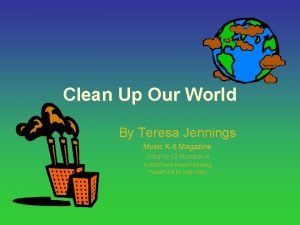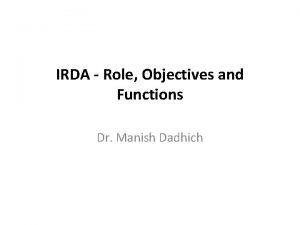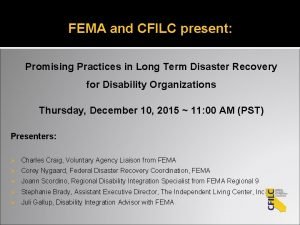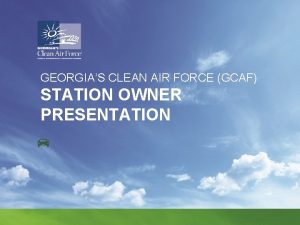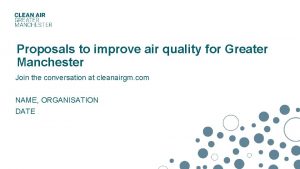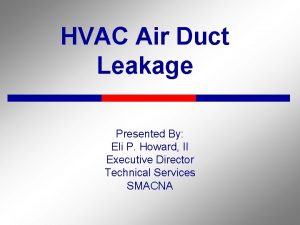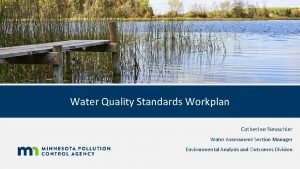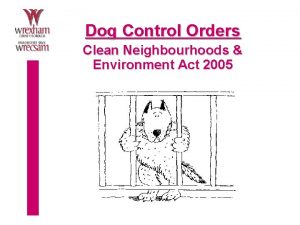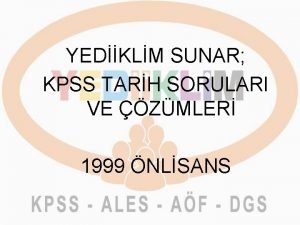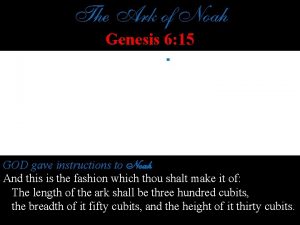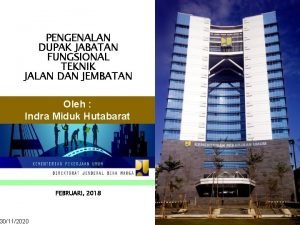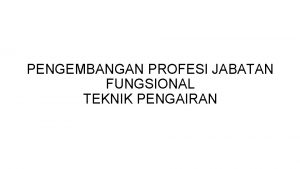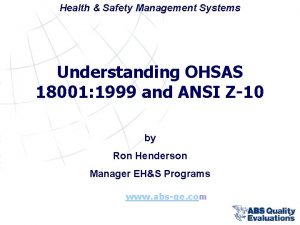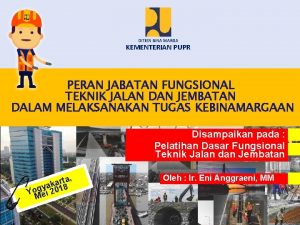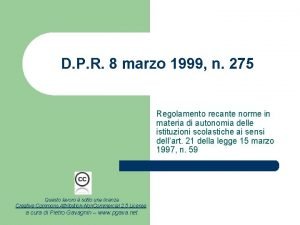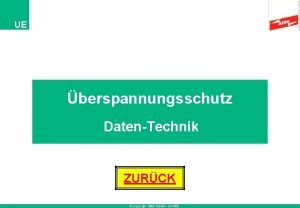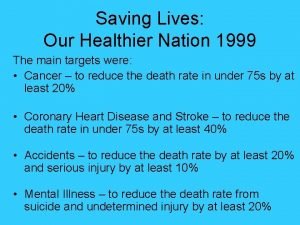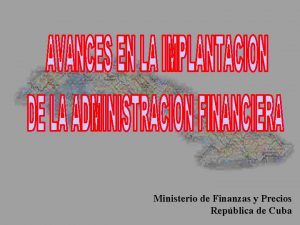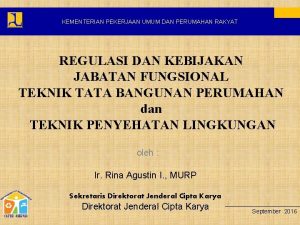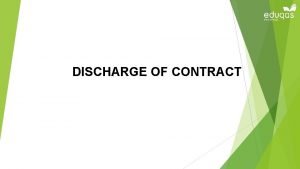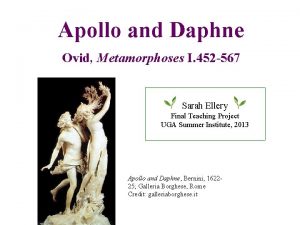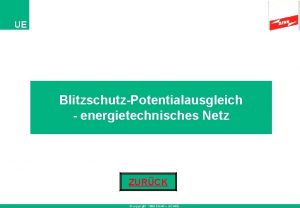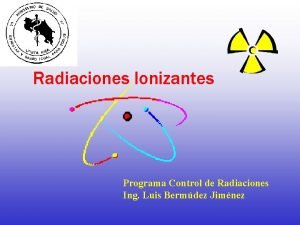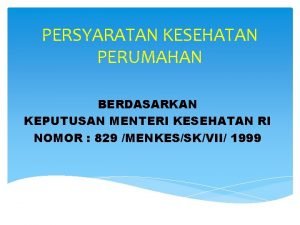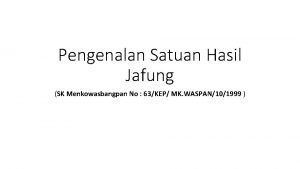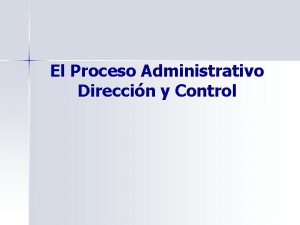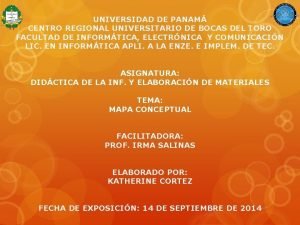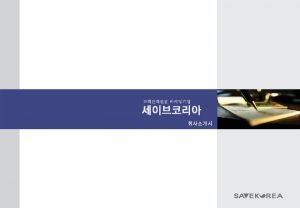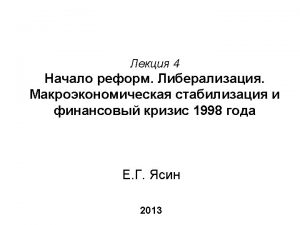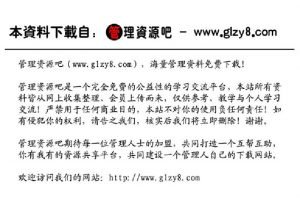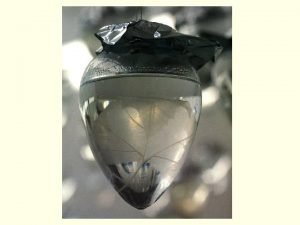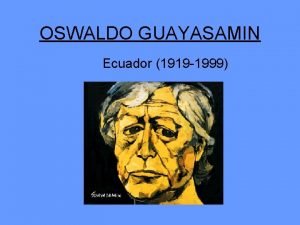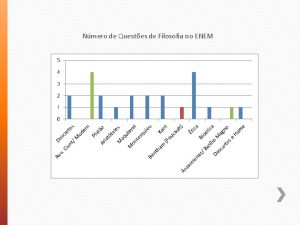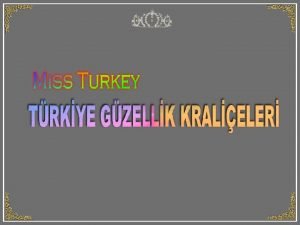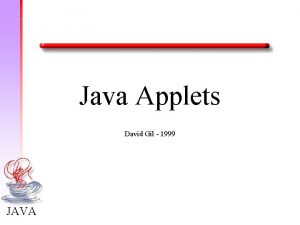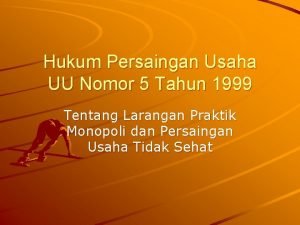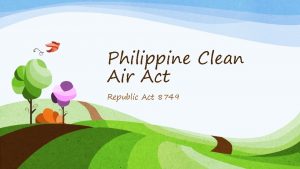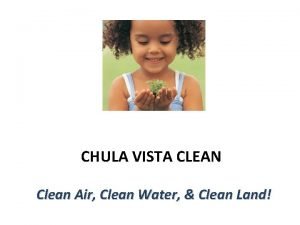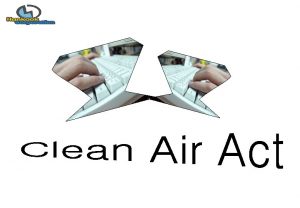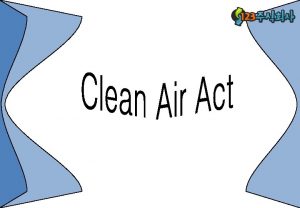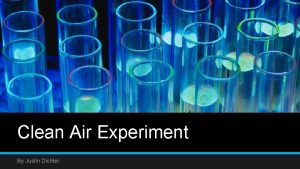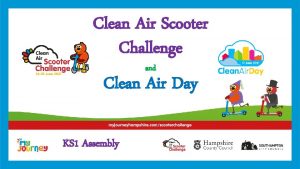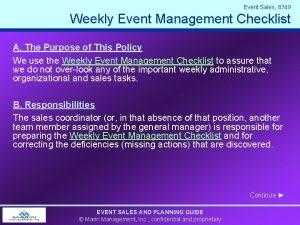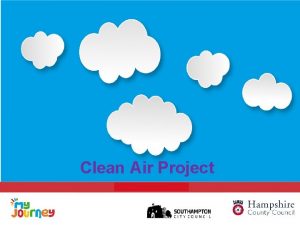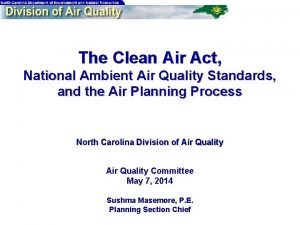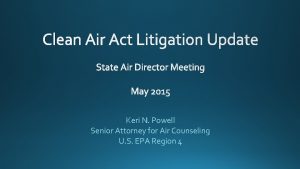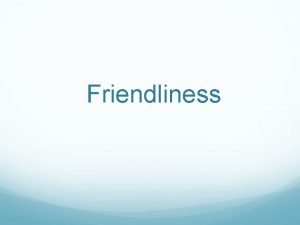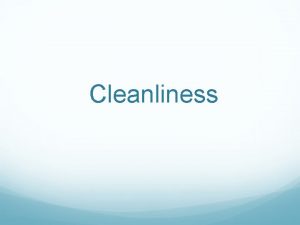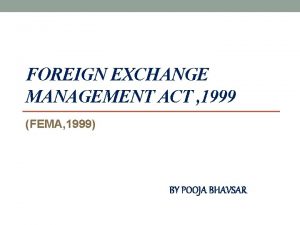RA 8749 CLEAN AIR ACT OF 1999 AN






















































- Slides: 54

RA 8749 CLEAN AIR ACT OF 1999 AN ACT PROVIDING FOR A COMPREHENSIVE AIR POLLUTION CONTROL POLICY AND FOR OTHER PURPOSES

Definition of Terms Air Pollutant - means any matter found in the atmosphere other than oxygen, nitrogen, water vapor, carbon dioxide, and the inert gases in their natural or normal concentrations, that is detrimental to health or the environment i. e. Smoke Soot Gases Chemicals Dust Cinders Fumes Radioactive substances

Definition of Terms Air Pollution - means any alteration of the physical, chemical and biological properties of the atmospheric air which will render the air resources of the country harmful, detrimental, or injurious to public health, safety or welfare or which will adversely affect their utilization.

GENERAL PROVISIONS Section 1 -4

■ Republic act No. 8749, shall be known as the "Philippine Clean Air Act of 1999. “ It is a comprehensive air quality management policy and program which aims to achieve and maintain healthy air for all Filipinos.

Declaration of Principles The State shall… …Protect and advance the right of the people to a balanced and healthful ecology …Promote and protect the global environment to attain sustainable development …Recognizes that the responsibility of cleaning the habitat and environment is primarily areabased. …Recognizes the principle that "polluters must pay". …Recognizes that a clean and healthy environment is for the good of all and should, therefore, be the concern of all.

Declaration of Policies a) Formulate a holistic national program of air pollution management b) Encourage cooperation and self-regulation among citizens and industries c) Focus primarily on pollution prevention rather than on control (management programs) d) Promote public information and education and encourage active participation e) Formulate and enforce a system of accountability for short and long-term adverse environmental impact of a project, program or activity. .

Recognition of Rights a) The right to breathe clean air; b) The right to utilize and enjoy all natural resources according to the principles of sustainable development; c) The right to participate in the whole process of making environmental policies and monitoring. d) The right to participate in the decision-making process concerning development policies, plans and programs projects or activities that may have adverse impact on the environment and public health;

Recognition of Principles e) The right to be informed of the nature and extent of the potential hazard of any activity, undertaking or project and to be served timely notice of any significant rise in the level of pollution and the accidental or deliberate release into the atmosphere of harmful or hazardous substances; f) The right of access to public records which a citizen may need to exercise his or her rights effectively under this Act; g) The right to bring action in court or quasi-judicial bodies to enjoin all activities in violation of environmental laws and regulations, to compel the rehabilitation and cleanup of affected area, and to seek the imposition of penal sanctions against violators of environmental laws; and h) The right to bring action in court for compensation of personal damages resulting from the adverse environmental and public health impact of a project or activity.

INTRODUCTION TO AIR QUALITY MANAGEMENT Section 6 -10

Air Quality Monitoring and Information Network ■ prepare an annual National Air Quality Status Report which shall be used as the basis in formulating the Integrated Air Quality Improvement Framework – Extent of pollution in the country based on reports of the Department's monitoring stations; – Analysis and evaluation of the current state, trends and projections of air pollution – Identification of critical areas, activities, or projects which will need closer monitoring or regulation; – Recommendations

Air Quality Monitoring and Information Network ■ The DENR, in cooperation with the National Statistical Coordination Board(NSCB), shall design and develop an information network for data storage, retrieval and exchange.

Integrated Air Quality Framework ■ shall be adopted as the official blueprint with which all government agencies must comply with to attain and maintain ambient air quality standards. – – – Local Government Units Non-Government Organizations People’s Organization Academe Private Sector

Air Quality Control Action Plan ■ shall include control strategies and control measures to be undertaken within a specified time period necessary for the effective control and abatement of air pollution.

Air Quality Control Action Plan ■ Include enforceable emission limitations and other control measures, means or techniques, as well as schedules and time tables for compliance ■ establishment and operation of appropriate devices, methods, systems and procedures necessary to monitor, compile and analyze data on ambient air quality ■ regulation of the modification and construction of any stationary source within the areas covered by the plan

Air Quality Control Action Plan ■ Contain adequate provisions, prohibiting any source or other types of emissions activity within the country from emitting any air pollutant ■ control strategies and control measures to be undertaken within a specified time period, including cost-effective use of economic incentives, management strategies, collection action, and environmental education and information ■ Designate airsheds

Designation of Aisheds ■ The Secretary of the DENR, upon recommendation of the Environmental Management Bureau (EMB), will divide the country into different airsheds. ■ Airsheds are to be designated based on climate, weather, meteorology and topology, which affect the mixture and diffusion of pollutants in the air, share common interests or face similar development problems.

Management of Airsheds ■ Airsheds are to be managed by multi-sectoral Governing Boards chaired by the Secretary of the DENR with representatives from the local governments concerned (province/city/municipality), the private sector, people’s organizations, NGOs and concerned government agencies.

Designation of “non-attainment area” ■ Area where specific pollutant have already exceeded ambient standards.

Management of “non-attainment areas” ■ The Department shall prepare and implement a program that will prohibit new sources of exceeded air pollutant without a corresponding reduction in existing sources. ■ It will also implement a program and other measures including relocation, whenever necessary, to protect the health and welfare of residents in the area.

THE REGULATING BODY AND FUNDING

The Regulating Board ■ The Board shall be headed by the Secretary of the Department of Environment and Natural Resources as chairman. The members shall be as follows: a) b) c) d) e) f) Provincial Governors from areas belonging to the airshed; City/Municipal Mayors from areas belonging to the airshed; A representative from each concerned government agency; Representatives from people’s organizations; Representatives from non-government organizations; and Representatives from the private sector.

Function of Governing Boards ■ Formulate policies and standards subject to national laws; ■ Prepare a common action plan; ■ Coordinate its members; ■ Submit and publish an annual Air Quality Status Report for their airshed.

Support Groups ■ To carry out the day-to-day work of the board, a nine-member Executive Committee is to be elected at large by the members of the Governing Board. Technical Working Groups are also to be formed to ensure broader participation of all stakeholders. The EMB will serve as the technical secretariat of each Governing Board.

Air Quality Management Fund ■ An Air Quality Management Fund (AQMF), to be administered by the DENR, through the Bureau, as a special account in the National Treasury shall be established to finance containment, removal and clean up operations of the government in air pollution cases, guarantee restoration of ecosystems and rehabilitate areas affected by violations to the ACT, support research, enforcement and monitoring activities of the relevant agencies. Such fund may likewise be allocated per airshed for the undertakings herein stated.

Sources for the AQMF ■ Air emission charges from industries and motor vehicles; ■ Fines and penalties for non-compliance with air pollution standards; ■ Grants from both private sector and donor organization; ■ Limited percentage (5 to 10%) of the proceeds of the Program Loan for the Metro Manila Air Quality Improvement Sector Development Program

Ensuring Good Air Quality ■ The National Ambient Air Quality Guideline Values, in order to protect health, safety and the general welfare, have been set in the law. These are to be routinely reviewed by the DENR, through EMB, in coordination with other concerned agencies and sectors.

AMBIENT AIR QUALITY STANDARDS

Ambient Air Quality Guideline




Maximum limits of particulates 1. Fuel Burning Equipment a) Urban or Industrial Area (150 mg/NCM) b) Other Area (200 mg/NCM) 1. Cement Plants (Kilns, etc. ) (150 mg/NCM) 2. Smelting Furnaces (150 mg/NCM) 3. Other Stationary Sources a (200 mg/NCM) Other Stationary Sources means a trade, process, industrial plant, or fuel burning equipment other than thermal power plants, industrial boilers, cement plants, incinerators and smelting furnaces

Maximum limits of sulfur oxides Existing Sources i. Manufacture of Sulfuric Acid and Sulf(on)ation Process (2. 0 gm/NCM) as SO 3 ii. (ii) Fuel Burning Equipment (1. 5 gm/NCM) as SO 2 iii. (iii) Other Stationary Sources a (1. 0 gm/NCM) as SO 3 New Sources i. Manufacture of Sulfuric Acid and Sulf(on)ation Process (1. 5 gm/NCM) as SO 3 ii. Fuel Burning Equipment (0. 7 gm/NCM) as SO 2 iii. Other Stationary Sources a (0. 2 gm/NCM) as SO 3



FOR VEHICLES


EMISSION CHARGE SYSTEM AND FINES AND PENALTIES

What are covered by the Clean Air Act? ■ All potential sources of air pollution (mobile, point and area sources) must comply with the provisions of the law. All emissions must be within the air quality standards. – Mobile sources refer to vehicle like cars, trucks, buses, jeepneys, tricycles, motorcycles and vans. – Point sources refer to stationary sources such as industrial firms and smokestacks of power plants, hotels and other establishments. – Area sources refer to sources of emission other than the above. These include smoking, burning of garbage, and dust from construction, unpaved grounds, etc.

Charge System ■ Mobile Sources – Vehicle – Fuel ■ Point Sources – Industries Other areas (smoking, burning or garbage and dust from construction, unpaved grounds, etc. )

OTHER SOURCES

■ Ozone-Depleting Substances. - Consistent with the terms and conditions of the Montreal Protocol on Substances that Deplete the Ozone Layer Philippines is a signatory, the Department shall phase out ozone-depleting substances. ■ Greenhouse Gases-PAGASA shall regularly monitor meteorological factors affecting environmental conditions including ozone depletion and greenhouse gases and coordinate with the Department in order to effectively guide air pollution monitoring and standard-setting activities. ■ Persistent Organic Pollutants-The Department shall develop short-term and long-term national government programs on the reduction and elimination of POPs such as dioxins and furans. ■ Radioactive Emissions. - All projects which will involve the use of atomic and/or nuclear energy, shall be regulated in the interest of public health and welfare by the PNRI

BANNING

Ban on Incineration ■ Incineration - burning of municipal, biomedical and hazardous waste, which process emits poisonous and toxic fumes is hereby prohibited; -not applicable to traditional small-scale method of community/neighborhood sanitation "siga", traditional, agricultural, health, and food preparation and crematoria;

Ban on Smoking ■ Smoking inside a public building or an enclosed public place including public vehicles and other means of transport or in any enclosed area outside of one's private residence, private place of work or any duly designated smoking area is hereby prohibited under this Act. This provision shall be implemented by the LGU's.

Penalties ■ Violation of Standards for Stationary Sources. - For actual exceedance of any pollution or air quality standards under this Act or its rules and regulations, the Department, through the Pollution Adjudication Board (PAB), shall impose a fine of not more than One hundred thousand pesos (P 100, 000. 00) for every day of violation against the owner or operator of a stationary source until such time that the standards have been complied with.

Penalties ■ Violation of Standards for Motor Vehicles. - No motor vehicle shall be registered with the DOTC unless it meets the emission standards set by the Department ■ In addition, the driver and operator of the apprehended vehicle shall undergo a seminar on pollution control a. First Offense - a fine not to exceed P 2, 000. 00); b. Second Offense - a fine not less than P 2, 000. 00 and not to exceed P 4, 000. 00 c. Third offense - one (1) year suspension of the Motor Vehicle Registration (MVR) and a fine of not less than P 4, 000. 00 and not more than P 6, 000. 00

SO WHAT CAN WE DO?

What can you do to help clean the air? ■ For vehicle owners/motorists 1. Maintain your vehicle by changing oil regularly (every 5000 km) 2. Keep the engine well tuned following the owner’s manual 3. Keep tires proper inflated 4. Plan trips and observe proper driver habits 5. Remove unnecessary things from the trunk. Don’t overload and travel only at speed required by traffic regulations and road conditions.

What can you do to help clean the air? ■ For commuters 1. Try talking to the jeep/bus/tricycle driver about the high health risks of poor vehicle maintenance and improper driving practices 2. Patronize mass railway transit

What can you do to help clean the air? ■ For office workers 1. Reduce use of air conditioning and ensure that rooms are sealed 2. Make sure that lights are energy efficient 3. Use company vehicles wisely and make sure that they are well maintained 4. Use natural lighting by opening window curtains at daytime

What can you do help clean the air? ■ For EVERYONE 1. Report smoke belchers to LTO, MMDA and/or appropriate local government units 2. Walk or ride your bike to places 3. Work with residential association to stop burning of garbage 4. Spread the word about the ban of smoking in public places 5. Plant Trees

THANK YOU!
 Clean air act of 1990
Clean air act of 1990 Clean air act philippines
Clean air act philippines Clean up everybody let's clean up
Clean up everybody let's clean up Hubungan air tanah dan tanaman
Hubungan air tanah dan tanaman Enumerate the objectives of irda
Enumerate the objectives of irda Fema 1999
Fema 1999 Financial modernization act of 1999
Financial modernization act of 1999 Fema provisions
Fema provisions Gcaf
Gcaf Manchester clean air zone
Manchester clean air zone Eli p llc clean air
Eli p llc clean air Macbeth act 2 summary
Macbeth act 2 summary Clean water act
Clean water act Clean neighbourhoods and environment act 2005 dog fouling
Clean neighbourhoods and environment act 2005 dog fouling Batı anadoluda kurulan direnme örgütü
Batı anadoluda kurulan direnme örgütü Noah ark movie 1999
Noah ark movie 1999 Plan de estudios 1999 licenciatura en educación preescolar
Plan de estudios 1999 licenciatura en educación preescolar Dupak teknik pengairan
Dupak teknik pengairan 63/kep/mk.waspan/10/1999
63/kep/mk.waspan/10/1999 Ohsas 18001 1999
Ohsas 18001 1999 Requirements for teacher 3 erf
Requirements for teacher 3 erf Elon musk father name
Elon musk father name Jabatan fungsional pengawas jalan dan jembatan
Jabatan fungsional pengawas jalan dan jembatan Dpr 1999 n 275
Dpr 1999 n 275 Decs order no. 11 s. 1987
Decs order no. 11 s. 1987 Copyright 1999
Copyright 1999 What is our healthier nation 1999
What is our healthier nation 1999 Jenny moon reflective writing
Jenny moon reflective writing Decreto ley 192 de 1999
Decreto ley 192 de 1999 Permenpan teknik penyehatan lingkungan
Permenpan teknik penyehatan lingkungan Purpose of contract
Purpose of contract How did daphne react to her admirers
How did daphne react to her admirers Dehn 900304
Dehn 900304 The turn of the key movie
The turn of the key movie Noted fashion photographer
Noted fashion photographer Peru junin 20/02/1999
Peru junin 20/02/1999 Keputusan menteri kesehatan ri nomor 829/menkes/sk/vii/1999
Keputusan menteri kesehatan ri nomor 829/menkes/sk/vii/1999 Permenpanrb no. 63/kep/mk.waspan/10/1999
Permenpanrb no. 63/kep/mk.waspan/10/1999 La direccion como proceso administrativo
La direccion como proceso administrativo Kasamatsu and hirai 1999
Kasamatsu and hirai 1999 Novak y godwin, 1999
Novak y godwin, 1999 Kapa 1999
Kapa 1999 Conclusiones de la ley 1273 de 2009
Conclusiones de la ley 1273 de 2009 Copyright 1999
Copyright 1999 1993 1994 1995 1996 1997 1998 1999 2000 2001 2002
1993 1994 1995 1996 1997 1998 1999 2000 2001 2002 Nokia1999
Nokia1999 1999
1999 Simons and chabris
Simons and chabris 1999 sab
1999 sab Copyright 1999
Copyright 1999 Oswaldo guayasamín (1919-1999)
Oswaldo guayasamín (1919-1999) Enem 1999 depois de longas investigações
Enem 1999 depois de longas investigações şebnem ünal türkiye güzeli şimdiki hali
şebnem ünal türkiye güzeli şimdiki hali Gil 1999
Gil 1999 Uu no 5 tahun 1999
Uu no 5 tahun 1999


